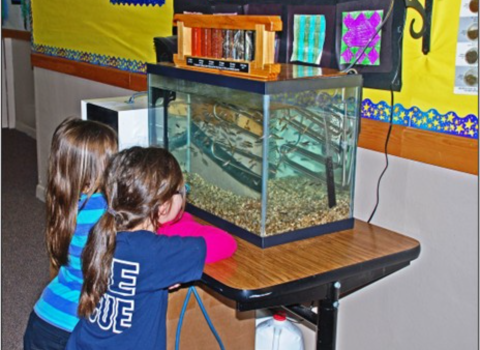The U.S. Fish and Wildlife Service (USFWS) and the Texas Commission on Environmental Quality (TCEQ) have recognized their responsibilities for natural resources overlap in some cases regarding water quality and endangered species found in the Edwards Aquifer region. USFWS has determined that new, optional water quality measures which serve as guidance for complying with TCEQ's Edwards Aquifer rules will also serve to protect several of the Federally-listed endangered and threatened species, such as the Barton Springs salamander.
We believe the most effective approach to threatened and endangered species management is through partnerships," said Southwest Regional Director for USFWS, Dale Hall. "The TCEQ and Chairman White have shown tremendous vision in aligning State control and oversight for water resources with threatened and endangered species conservation."
These water quality measures will be an option for developers going through the TCEQ authorization process beginning in February. The optional measures include a variation of current ?best management practices? (BMP) performance requirements, which are practices implemented to reduce the impact of developer activities on water quality in and upstream of the aquifer. They also include measures to address stream channel erosion resulting from increased impervious cover, sensitive feature protection practices, guidelines for sealing sensitive features, and methods to improve BMP maintenance documentation. These new measures will be an appendix to the technical guidance document for Edward Aquifer rules issued by the TCEQ.
The Endangered Species Act gives protection to those species, and their habitats, that are listed as either threatened or endangered. The USFWS believes the optional TCEQ measures add a level of security that protects the Barton Springs salamander, San Marcos salamander, Georgetown salamander, San Marcos gambusia, and the fountain darter from adverse water quality impacts. Other species may be added later.
urrently, development projects must receive a water quality authorization from the TCEQ, and also demonstrate to the USFWS that there is no impact to an endangered species in the area of the proposed development. Under the new process, developers that opt to comply with the new TCEQ measures will receive a water quality authorization through the TCEQ, which will be deemed by USFWS to comply with endangered species requirements in some cases. Some situations will still warrant direct consultation with USFWS, such as those projects requiring a federal permit, those that could impact listed species that are not water quality related, and those that could impact other listed species not covered by the measures, among others.
The agencies will hold informational meetings in Austin, San Marcos and San Antonio to further outline the program on the following dates:


